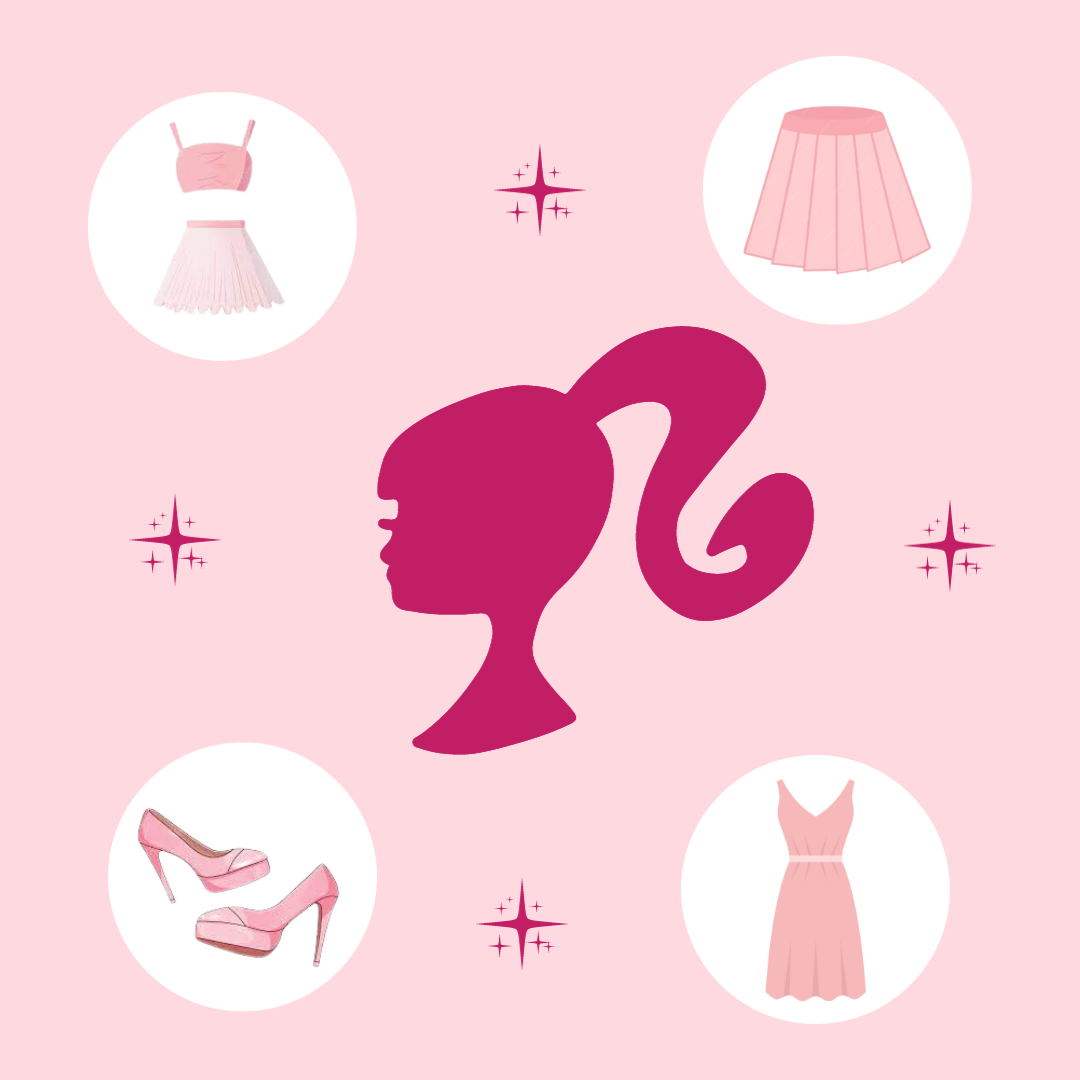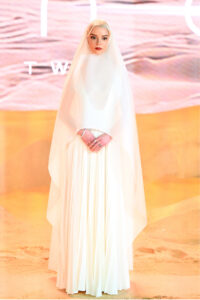Author: Chloe Bard
Copy Editor: Saadiya Patel
Graphic Designer: Ibrena Daradia
Content Warning: brief mention of body image
I’m sitting in the last row of the movie theatre with my friends on either side of me, while Margot Robbie as Barbie smiles down on an audience of pink outfits. The credits roll as “What Was I Made For?” by Billie Eilish echoes around the room. For a moment no one makes a sound, then, a smattering of applause accompanied by laughter, tears, and smiles.
Like many young girls, I grew up with a shelf full of Barbie DVDs and a toybox overflowing with Barbie dolls. My favourite colour was pink; I refused to wear anything but a dress to school and walked around my house in sparkly plastic heels.
My parents were hesitant about my obsession with princesses, worried by the sexist portrayals of women in the fairytales I consumed. They wanted me to have strong role models that proved women didn’t need princes to save the day.
Barbie was that role model. She could be anything, and she did it with the help of her friends. She wore pink, had beautiful clothes, and was always the hero.
However, as I grew up, dust settled on my toybox of Barbies. Eventually, I sold most of my dolls in a garage sale, keeping only a few favourites. My favourite colour changed every time I was asked, and I began to prefer pants over dresses.
At the beginning of high school, my style consisted of baggy clothing thrifted from the men’s section and the same pair of sneakers every day. My lack of self-confidence contributed to my hesitancy to experiment with fashion. Drawing attention to myself felt like a neon sign over my head telling everyone I was questioning my identity. I wasn’t sure who I was or how I wanted to present myself, which scared me a lot.
Being uncomfortable in your own body isn’t a unique experience as a teenage girl. Ballet and competitive dance constantly reminded me of how I looked while wearing a leotard, my discomfort seemingly emphasized by the floor-to-ceiling mirrors.
Often associated with femininity and being delicate, ballet was the opposite environment of the coed soccer team I played on, where I was one of the only girls. Although I was a stronger player than some of my male teammates, I rarely got passed to or acknowledged by the boys, deflating my passion for the sport. In ballet surrounded by other girls I was successful, but playing soccer on a field of boys I was invisible.
Around this time, I realized the weight of being a woman in a society that favours men. I was still figuring out who I was, but the boys on my team decided I wasn’t a worthy player. It was as if my pink headband or the visible sports bra strap under my jersey made up their minds before even seeing me kick a ball.
When I moved to Toronto for university, I began to use fashion as an outlet for gender expression. I experimented with various traditionally gendered items, such as skirts and ties, incorporating them into outfits that represented myself outside the gender binary. The city became a safe space to celebrate my queerness through fashion.
If I showed my 15-year-old self a picture of me now, I don’t think they would believe it. She never would’ve expected that I’d feel so comfortable in my own skin, or that I could express myself and dress the way I couldn’t in my small-minded hometown.
I love being a woman, feminine, and I love being queer. I’m grateful and privileged to express these parts of my identity in a safe and accepting space.
The Barbie movie helped me celebrate the former and current versions of myself by reclaiming and redefining what femininity means. Femininity is often seen as a weakness compared to masculinity, which is why many of us distance ourselves from the “girly” interests we had as kids. I liked ballet, pink and dresses, and I wanted to be taken seriously playing sports, which didn’t feel possible.
One quote from Taylor Swift’s documentary Miss Americana sums it up perfectly,
“I want to love glitter, and also stand up for the double standards that exist in our society. I want to wear pink and tell you how I feel about politics. I don’t think those things have to cancel each other out,” she says.
Putting into words what Greta Gerwig’s Barbie movie meant to me was more difficult than I expected. As a 20-year-old woman, this film couldn’t have come at a better point in my life. It brought me back to a simpler time when my biggest decision was what outfit my Barbie should wear.
The movie gives a hug to the young Chloe, wearing plastic heels. It cheers on teenage Chloe and tells her not to give up on the sport she loves. It holds 20-year-old Chloe’s hand and tells them to be proud of who they are and who they’ve become.
I couldn’t stop smiling while walking out of the theatre among others dressed in pink. You can be anything in a Barbie world, and I wouldn’t want to be anything but me.
























